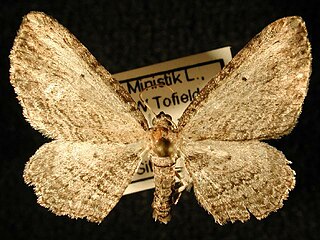
Horisme is a genus of moths in the family Geometridae. The genus was described by Jacob Hübner in 1825.

Odontoptila is a monotypic moth genus in the family Geometridae described by Warren in 1897. Its only species, Odontoptila obrimo, was first described by Druce in 1892. It is found in Central and North America.
Paota is a monotypic moth genus in the family Geometridae described by George Duryea Hulst in 1896. Its only species, Paota fultaria, was first described by Augustus Radcliffe Grote in 1882. It is found in North America and has a forewing length of 12 millimetres.
Perizoma epictata is a species of moth in the family Geometridae first described by William Barnes and James Halliday McDunnough in 1916. It is found in North America.
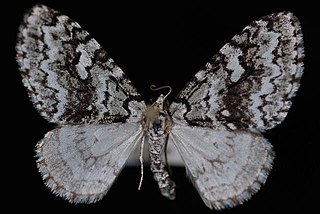
Cladara atroliturata, the scribbler, is a moth in the family Geometridae. The species was first described by Francis Walker in 1863. It is found in North America.
Eubaphe helveta is a species of moth in the family Geometridae first described by William Barnes in 1907. It is found in North America.

Grossbeckia semimaculata is a species of moth in the family Geometridae first described by William Barnes and James Halliday McDunnough in 1912. It is found in North America.
Lithostege deserticola is a species of moth in the family Geometridae first described by William Barnes and James Halliday McDunnough in 1916. It is found in North America.
Hydriomena costipunctata is a species of moth in the family Geometridae first described by William Barnes and James Halliday McDunnough in 1912. It is found in North America.
Hydriomena nevadae is a species of moth in the family Geometridae first described by William Barnes and James Halliday McDunnough in 1917. It is found in North America.
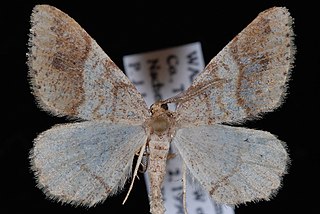
Speranza plumosata is a species of moth in the family Geometridae first described by William Barnes and James Halliday McDunnough in 1917. It is found in North America.
Destutia flumenata is a species of moth in the family Geometridae first described by Pearsall in 1906. It is found in North America.
Triphosa bipectinata is a species of moth in the family Geometridae first described by William Barnes and James Halliday McDunnough in 1917. It is found in North America.

Caripeta macularia is a species of moth in the family Geometridae first described by William Barnes and James Halliday McDunnough in 1916. It is found in North America.
Stamnodes deceptiva is a species of moth in the family Geometridae first described by William Barnes and James Halliday McDunnough in 1918. It is found in North America.

Antepirrhoe fasciata is a species of moth in the family Geometridae first described by William Barnes and James Halliday McDunnough in 1918. It is found in North America.
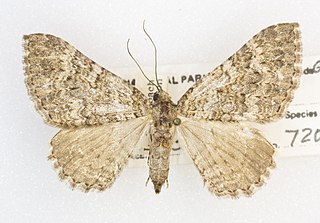
Archirhoe neomexicana is a species of geometrid moth in the family Geometridae. It is found in Central America and North America.

Perizoma curvilinea is a species of geometrid moth in the family Geometridae. It is found in North America.
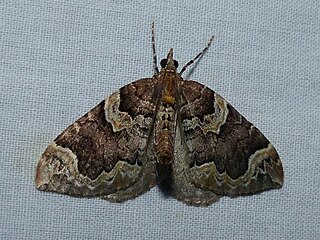
Eulithis serrataria, commonly known as the serrated eulithis, is a species of moth in the family Geometridae. It was first described by William Barnes and James Halliday McDunnough in 1917 and it is found in North America.

Lithostege marcata is a species of moth in the family Geometridae first described by William Barnes and James Halliday McDunnough in 1916. It is found in North America.











